 |
|||||||||||||
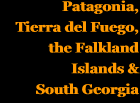 |
|||||||||||||
 |
|||||||||||||
 |
|||||||||||||


Chapter 4
The FCE broad gauge network
Appendix 11
Structure drawings and station plans from the Puerto Deseado to Lago Nahuel Huapi line
A volume containing these drawings and many others is held in the archives above the railway museum at Retiro in Buenos Aires. We are grateful to the staff there for permission to copy and reproduce them. The drawings clearly date from the very earliest years of the Puerto Deseado railway, whilst everything was still under construction.
The drawings on this page are generally noted as PLANO DEFINITIVO DE CONSTRUCCION which corresponds to British practice of as-built drawing. These were the drawings originally used for defining the construction, and on some one can detect where they have been altered to reflect what was actually constructed.
1
Stone built water tower at Tellier station. The tank is a Piggott Patent sectional tank. Thomas Piggott & Co of Birmingham, at the end of the 19th century and early 20th century, produced a modular form of tank not unlike the present day Braithwaite tank. The FC Estado engineers liked them as they could be readily built to a size to supply the available water supply.
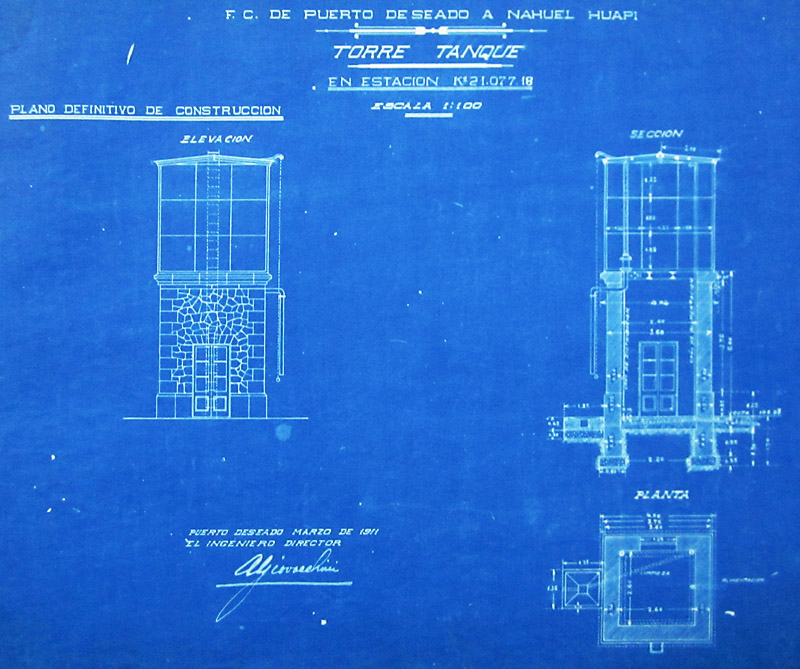
2
Passengers' building at 3rd class station at Tellier. The stations were defined as first, second or third class depending on their importance. It would appear that, at least originally, no separate accommodation was provided for station staff; they lived in the station building. In this third class station there was a room at the top right corner with a doorway to what may have been a sort of kitchen with the only source of heating in the form of a stove provided. It is not specified if this is a salamandra, a stove for purely heating, or a cocina económica, or kitchen range. Remember that in winter temperatures could drop to minus 30° C, so life could have been tough. There is a larder off the kitchen and adjacent to it a toilet entered from the outside.
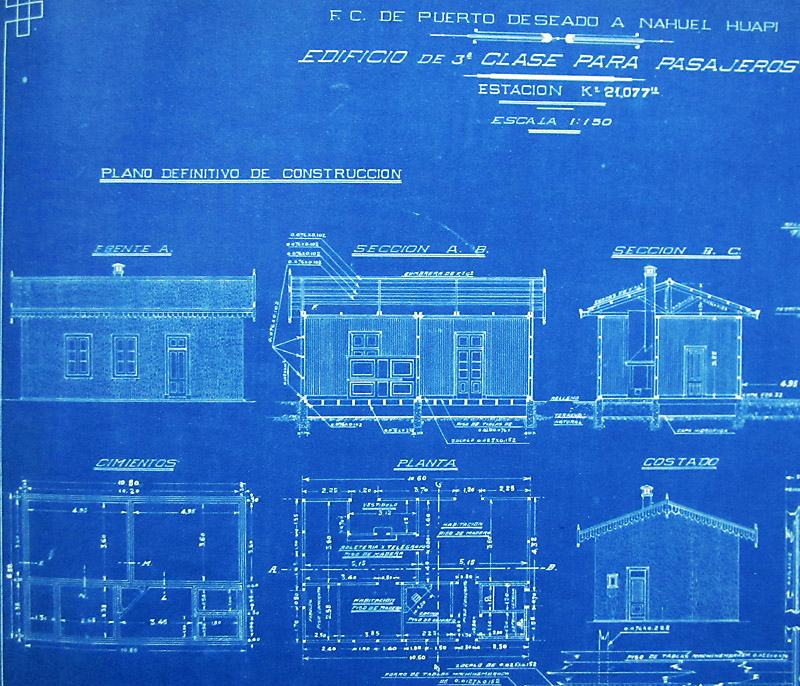
3
Passengers' building at 2nd class station Antonio de Biedma. This is a larger station building, but again only one source of heat provided. There is a passageway through the building for passengers with two ticket windows provided and public toilets. What the domestic arrangements were is not clear. There is no evidence of rainwater harvesting being intended to be practised on the drawings of the station buildings. In Patagonia this was usual on isolated buildings.
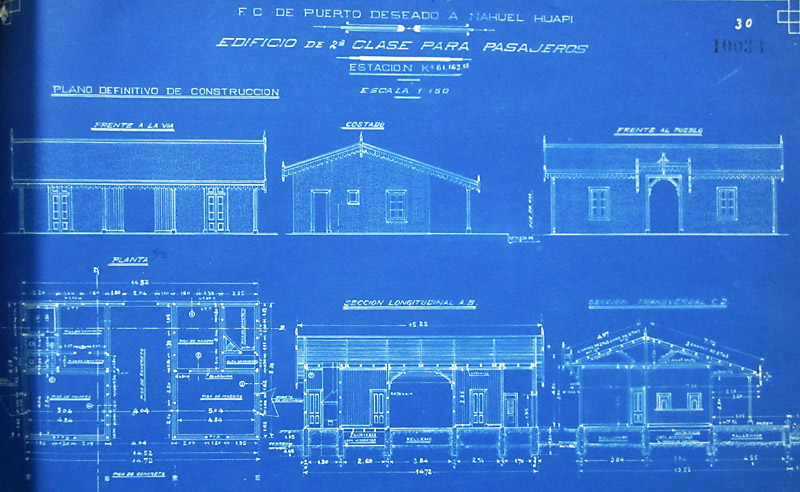
4
Puerto Deseado station building, town side facade.
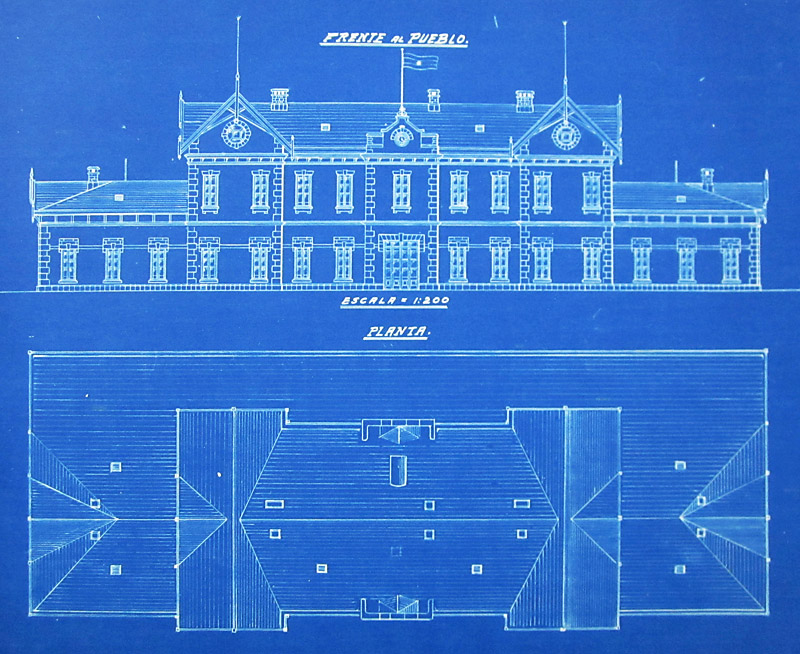
5
Cross-section of station building at Puerto Deseado.
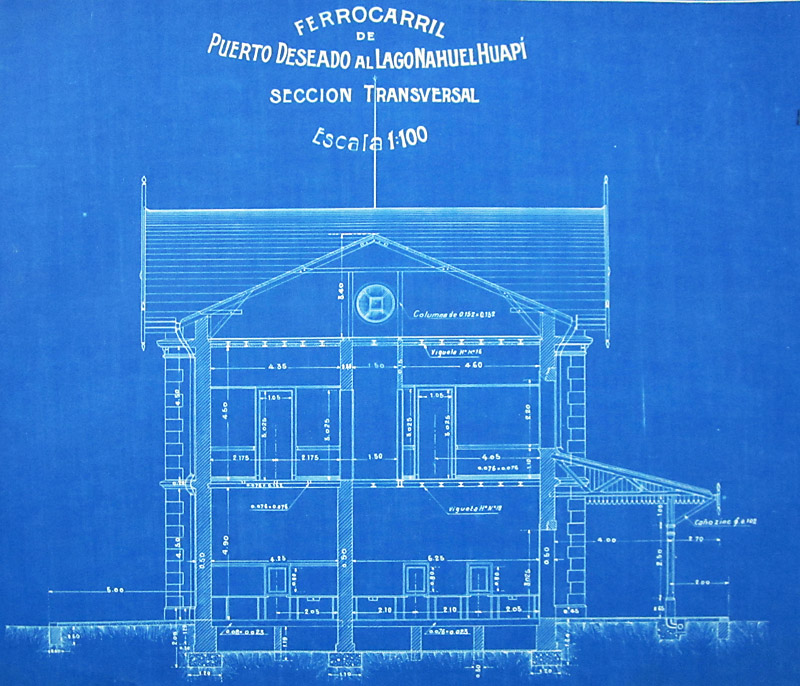
6
Layout of 2nd class station at Antonio de Biedma, and a 3rd class station at Cerro Blasnco. The station arrangement shows this second class station to have the main running line and two loops. One is close by the running line and would be for crossing trains; the other is a double ended goods siding as evidenced by the goods shed opposite the station building and a loading platform adjacent. There is also a two arm stop signal at the centre point of the station. There is a pozo absorbente, or septic tank, near the station building, which implies that there was at least one WC provided. Two windmills were provided, one for water for domestic purposes and one to supply the tank for the engines. The third class station has merely a passing loop.
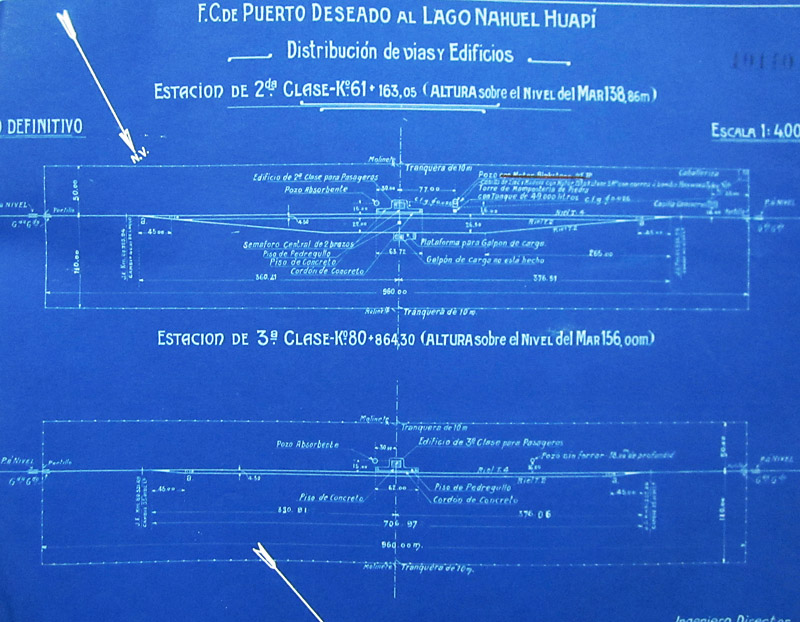
7
Layout of third class station at Fitz Roy and 2nd class station at Tehuelches. Again the difference between a second and a third class station can be seen.
In all cases the north point is facing down as a result of the convention being adopted that the UP direction (increasing kilometrage) is from left to right.
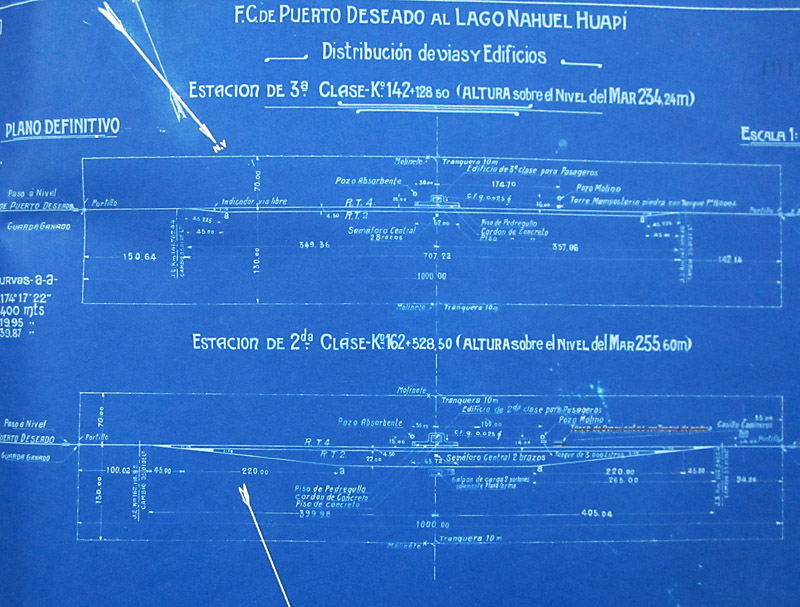
8
Layouts of stations at Koluel Kayke and Piedra Clavada. These stations were completed at a later stage when the station names had been settled.
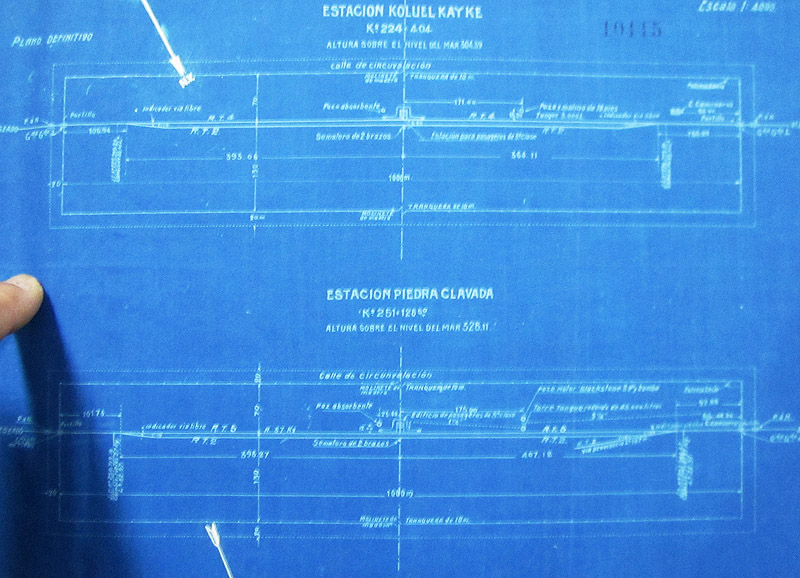
4-27-1-12
Main pages
Bariloche line rolling stock •
Com. Rivadavia line extra photos •
Pto. Deseado line extra photos •
Pto. Deseado line extra photos 2 •
Appendices
2 Chronology of Patagonian railway proposals •
3 Bariloche line route itinerary •
4 Com. Rivadavia route itinerary •
5 Pto. Deseado route itinerary •
7 Com. Rivadavia line loco list •
8 Pto. Deseado line loco list •
15 FCP working timetable instructions 1960 •
16 Report on construction 1912 A •
17 Report on construction 1912 B •
21 President Alcorta address •
23 Purchase of wagons decree •
25 Early Patagonian proposals •
26 Progress to Bariloche 1926 •
28 Restructuring report 1953 •